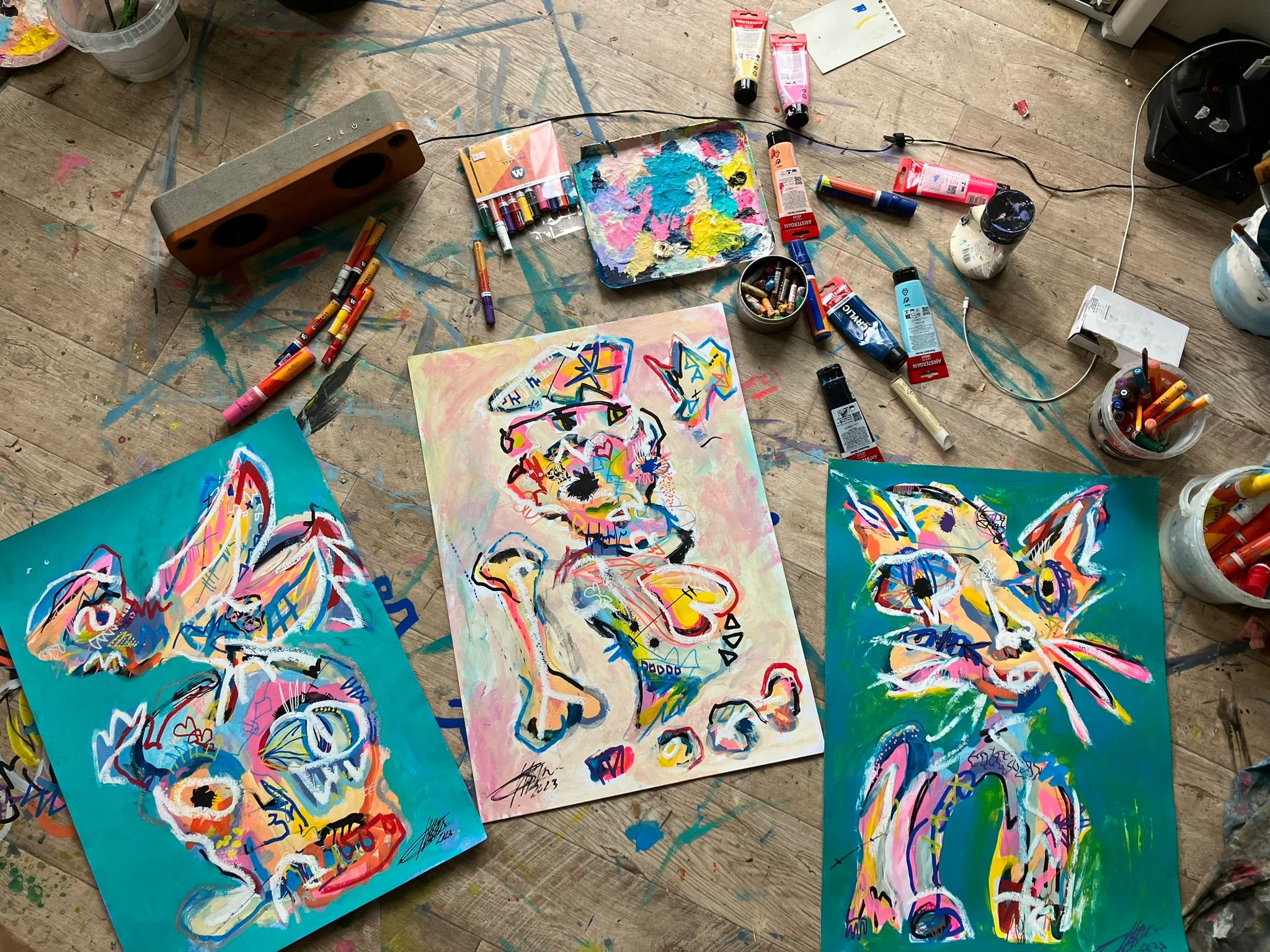
Dutch artist Matthijs Scholten is best known for his distinctive, vivid paintings that employ dazzling color palettes and toe the line between representational and figurative and total abstraction. Exploring themes and ideas around contemporary life, the human psyche, and the medium of painting itself through his singular visual language, Scholten’s work manages to convey both eccentric spontaneity as wella s carefully calibrated compositional techniques.
On view through November 16, 2024, Amsterdam-based SmithDavidson Gallery presents Scholten’s solo show “Angels & Demons,” comprised of new and recent work made both in the artist’s local studio as well as in Bali. Following a whirlwind year that saw the artist’s work shown in Miami, Chicago, and New York, next will be the includion of Scholten’s work with the gallery at PAN Amsterdam Art Fair later this month and at Art Miami in December.
We reached out to Scholten to learn more about the present exhibition, as well as his inimitable creative process.
Artist Matthijs Scholten (2022). Courtesy of SmithDavidson Gallery, Amsterdam.
Can you tell us about some of the overarching themes or inspirations that were front of mind for you in creating the body of work on view in “Angels & Demons”?
“Angels & Demons” delves into the complex dynamics between freedom and constraint in modern life. While our society offers a sense of liberation, it’s countered by the pressures and controls that shape us—whether through agendas, social media, or societal expectations. My work explores how these influences both limit and provoke, with the “angels” and “demons” symbolizing my own process of grappling with them.
While there are representational elements in your paintings, abstraction is equally compositionally important. How do you choose or consider the degree of each in you work? What attracts you to one versus the other?
Regarding the balance between abstraction and representation, I follow an intuitive approach, allowing each work to evolve organically based on emotion and spontaneity. Early in my career, representation dominated, but as I embraced abstraction, I found a new form of freedom, blending the two dynamically in each piece.
Matthijs Scholten, Flying Demon (2024). Courtesy of SmithDavidson Gallery, Amsterdam.
Can you describe your process from a technical standpoint? Do you plan or sketch everything out beforehand, or is it more spontaneous?
Technically, I begin with photography, capturing overlooked or “meaningless” details from everyday life, like street stains or graffiti layers. These serve as initial inspiration, and through sketches, I gradually expand these ideas onto canvas.
Similarly, what is your personal approach to color and choosing of specific palettes for different works? What does color choice mean for you?
In “Angels & Demons,” I want colors to feel like they’re splashing off the canvas, with contrasts as bold as possible. I build my paintings in many layers, painting and repainting within similar color schemes to create depth and intensity. When the piece calls for it, I add subtle fluorescent touches—not to dominate, but to bring in a hint of luminosity. This layering process, combined with vibrant contrasts, brings a tactile energy to each work, inviting the viewer to feel the movement and life within the colors.
Matthijs Scholten, Facing Purple (2024). Courtesy of SmithDavidson Gallery, Amsterdam.
Can you tell us a bit about the role of symbolism in this show or in your practice overall?
Symbolism holds a special place in my body of work, weaving together influences from children’s art, ancient cave drawings, and pre-Colombian symbols. These elements, subtly embedded in my work, connect to myself and an inner sense of wonder, as well as to the endurance of human expression across time.
What do you hope visitors to the show take away with them? Do considerations of viewing experience play any role in how you work?
Ultimately, I hope that viewers of “Angels & Demons” will reconnect with their inner child, feeling less bound by daily structures and more attuned to spontaneity and play. I find fulfillment in knowing my art can evoke movement and vitality, inspiring viewers to pause, look deeply, and perhaps reclaim a sense of freedom within themselves.
Matthijs Scholten, Bouquet of Carnivorous Flowers (2024). Courtesy of SmithDavidson Gallery, Amsterdam.
What are you working on now? Or, alternatively, what do you hope to work on next? Are there any ideas you want to explore you haven’t had the chance to yet?
Currently, I am researching ancient cultures and lost tribes, expanding the exploration of timeless human experiences and symbolisms—a direction that may shape future works and deepen their symbolic and cultural resonance. This captures the essence of my process, inspirations, and vision for “Angels & Demons.”
“Matthijs Scholten: Angels & Demons” is on view at SmithDavidson Gallery, Amsterdam, through November 16, 2024.